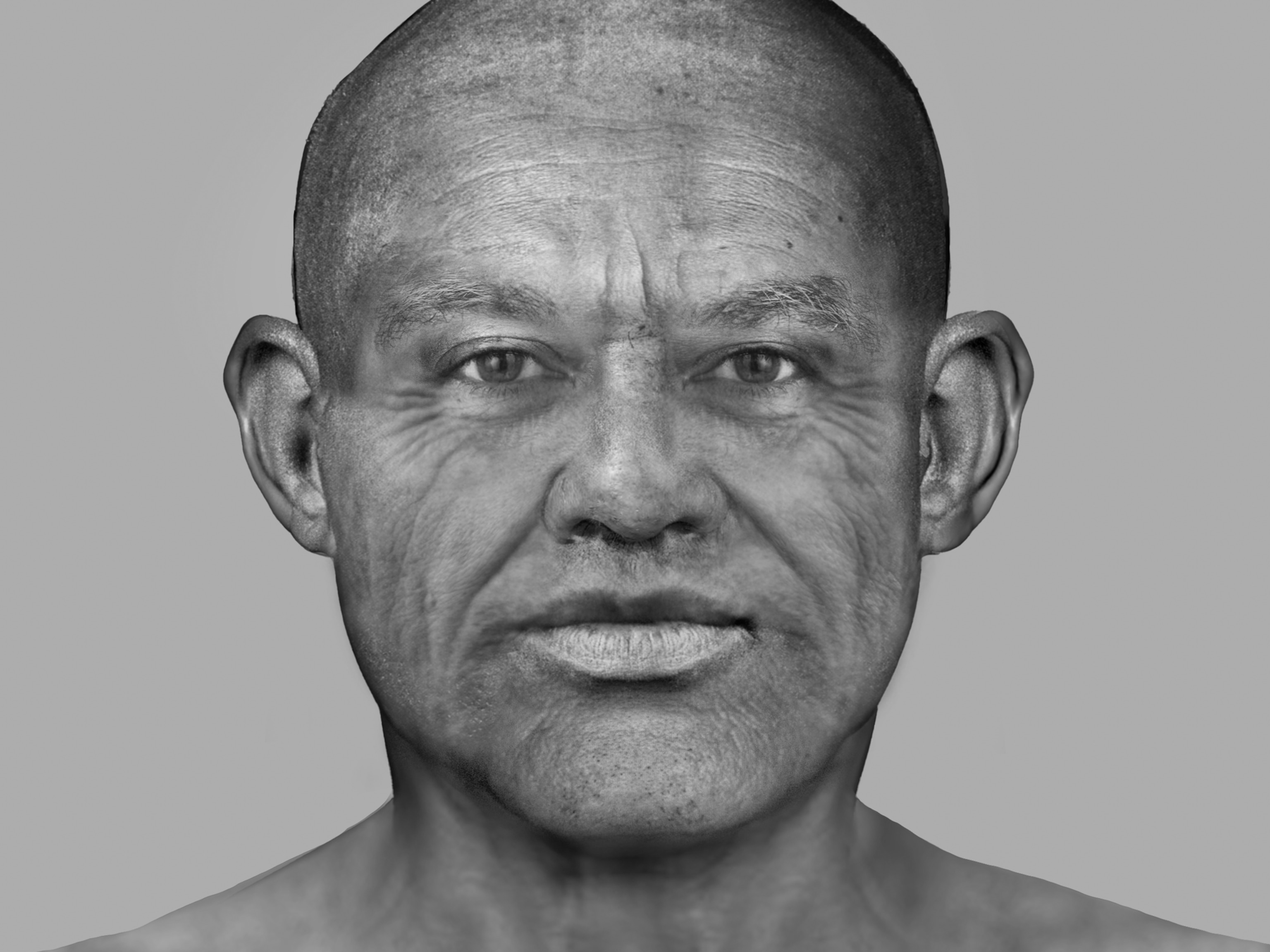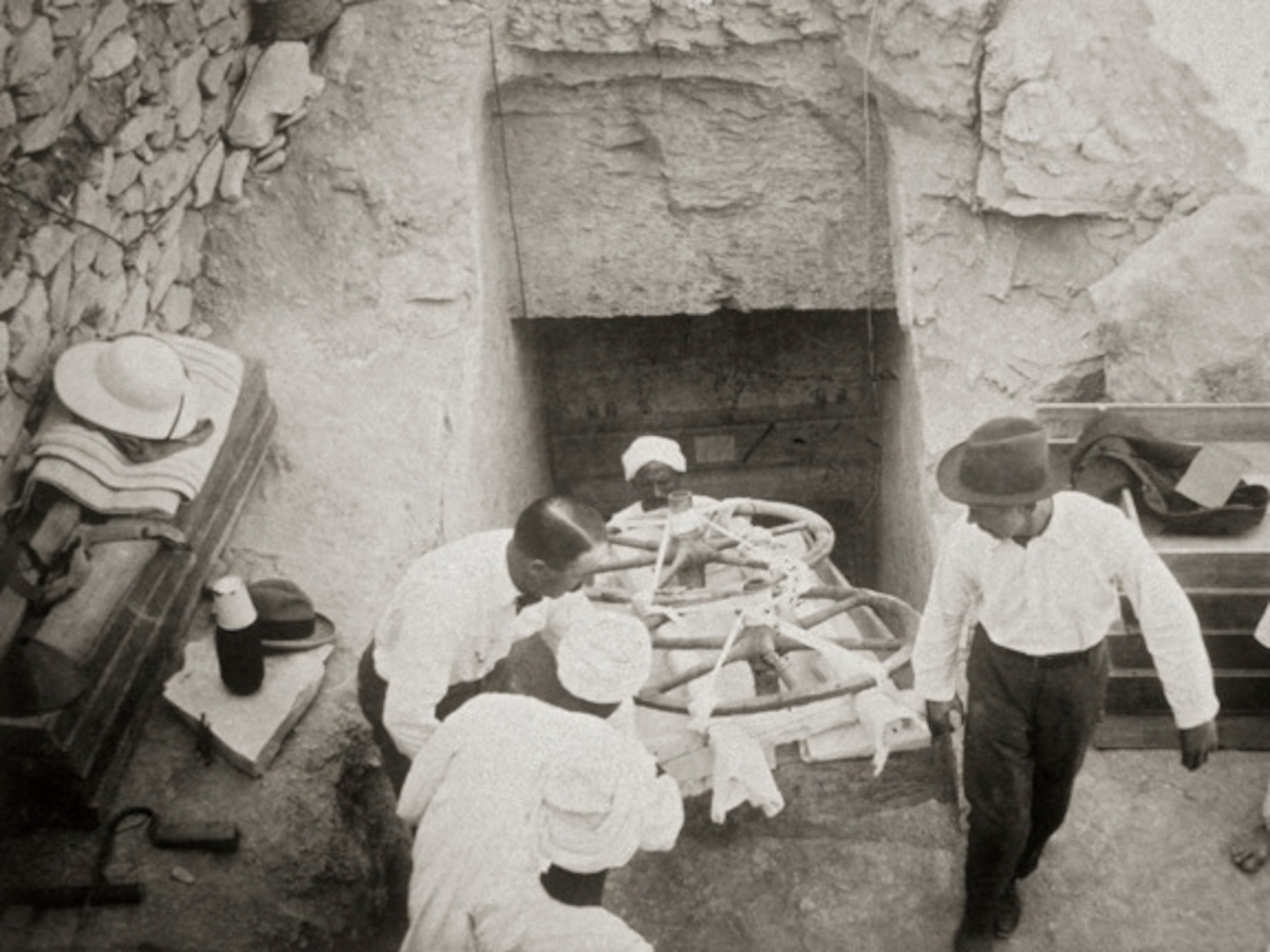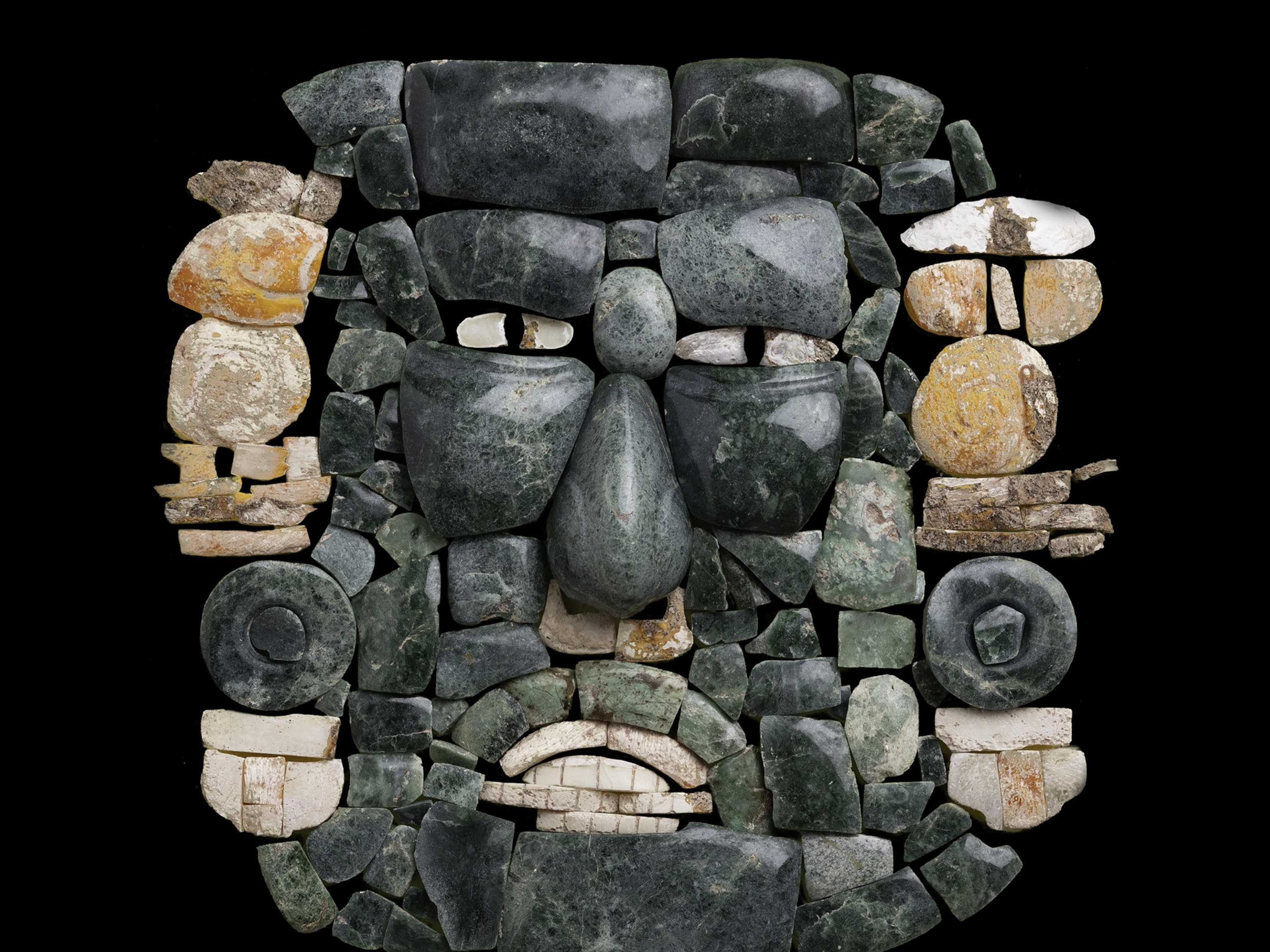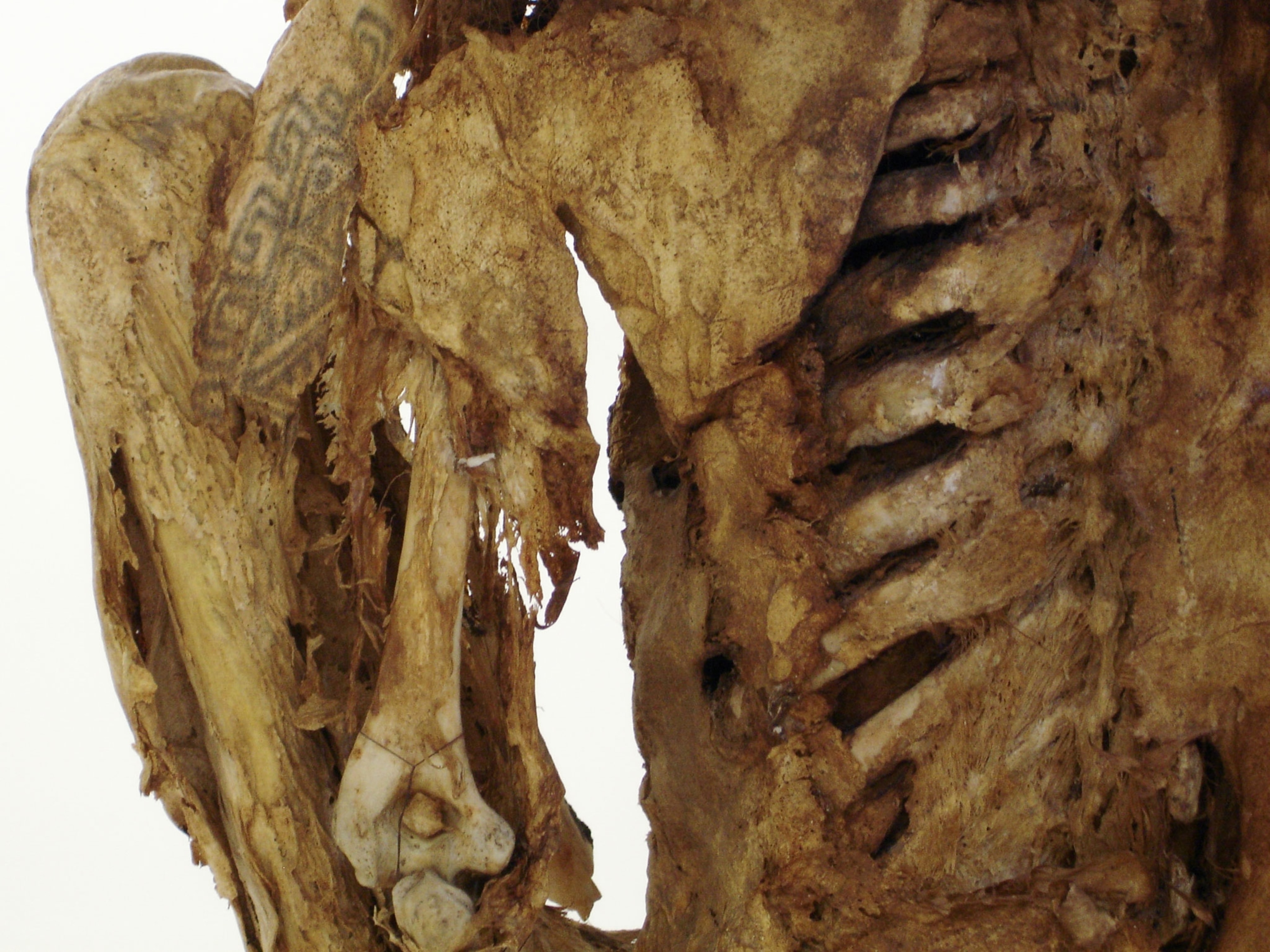
Tiny Mummy’s ‘Alien’ Appearance Finally Explained
Researchers hope their new research will settle debate over the origins of Ata, a naturally mummified infant found in the Chilean desert.
Ata is just six inches tall, with a conical-shaped head and unusually hard bones for her size. Some have claimed that she’s an alien. But a new study published today in the journal Genome Research not only continues to disprove the alien theory, but also reveals a scientific explanation for her allegedly extraterrestrial appearance.
The debate started in 2003 when the naturally mummified remains of Ata were discovered near a ghost town in Chile’s Atacama Desert. A Spanish businessman, Ramón Navia-Osorio, purchased her mummy and in 2012 allowed a doctor named Steven Greer to use x-ray and computed tomography (CT) imaging to analyze her skeleton.
Greer is the founder of The Disclosure Project, which is “working to fully disclose the facts about UFOs, extraterrestrial intelligence, and classified advanced energy and propulsion systems,” according to its Web site.
Ata is only as long as a human fetus. But a radiologist who analyzed the images said that Ata’s bones were about as mature as those of a human six-year-old.
Were Chile's death-cult mummies inspired by desert conditions?
At the time, Greer also provided samples of Ata’s bone marrow to immunologist Garry Nolan at Stanford University in Palo Alto, Calif. Nolan’s team sequenced Ata’s DNA and concluded that her genetic material was from a human being, not an alien. But he couldn’t explain how such a small person could exhibit her unusual physical appearance.

“Once we understood that it was human, the next step was to understand how something could come to look like this,” Nolan says.
So Nolan worked with genetic researchers at Stanford and with computational biologist Atul Butte’s team at the University of California, San Francisco to analyze Ata’s genome. According to their new study, mutations are present in seven of Ata’s genes that are all involved in human growth. Nolan now thinks that this combination of mutations caused Ata’s severe skeletal abnormalities, including her unusually rapid bone growth. He says that Ata is most likely a human fetus who was either stillborn or died soon after birth.
But those who believe that Ata is extraterrestrial aren’t changing their minds, regardless of the new scientific revelations.
“We don’t know what it is, but it most certainly is not a deformed human,” says Greer, who is aware of the new research.
Scientists, however, say that in light of the new analysis, it’s time to bury the Ata controversy.
“The alien hype was silly pseudoscience promoted for media attention,” says paleoanthropologist and anatomist William Jungers, an emeritus professor at Stony Brook University Medical Center. “This paper puts that nonsense and poor little Ata to bed.”
Doctors who treat children with rare genetic bone disorders also think the debate highlights how archaeologists and other scientists can be misled by genetic disorders that cause unusual physical features. For instance, geneticist Fowzan Alkuraya points to the controversy surrounding the “hobbits,” small creatures that were discovered 15 years ago in Indonesia. Scientists are still embroiled in debate over whether the diminutive beings are relatives of modern humans, or are simply humans with unusually small size.
“This paper serves as a reminder about the exotic nature of many genetic disorders,” says Alkuraya, who is a geneticist at the King Faisal Specialist Hospital and Research Center in Riyadh, Saudi Arabia.
All humans—Ata included—can have many different genetic mutations. But usually only one of these mutations actually causes a child’s disease. It’s “virtually unheard of” for seven mutations to be involved, Alkuraya says; he thinks that one or at most two of the mutations probably caused Ata’s growth problems.
How to make a mummy in 70 days or less.
Nolan disagrees: “That poor child unfortunately rolled the dice seven times snake eyes,” he says.
But it would be difficult, if not impossible, to decide which of Ata’s genetic defects caused her symptoms. That’s because scientists don’t have any information about Ata’s relatives. If they had DNA from Ata’s parents, for instance, they could check which of Ata’s mutations were also present in her mother and father. Any of Ata’s mutations that were also present in her parents’ DNA might be harmless, because unlike Ata, her parents lived long enough to conceive a baby.
Even though no one knows anything about her parents, Nolan thinks that someone cared for Ata when she died about 40 years ago. He points to the way she was carefully laid flat on the ground, wrapped in a leather pouch.
“They didn’t just throw it away; somebody thought it was important. It was their child,” Nolan says.
Like Jungers, Nolan now wants to see Ata returned to Chile and laid to rest once again.
“I don’t think that people should be trafficking in human bodies and claiming they’re aliens for the sake of monetary advantage,” Nolan says.
Erika Check Hayden is the director of the Science Communication Program at the University of California, Santa Cruz. Follow her on Twitter.





